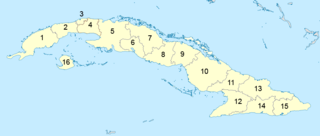
A municipality is usually a single administrative division having corporate status and powers of self-government or jurisdiction as granted by national and regional laws to which it is subordinate. It is to be distinguished (usually) from the county, which may encompass rural territory or numerous small communities such as towns, villages and hamlets.
A local government is a form of public administration which, in a majority of contexts, exists as the lowest tier of administration within a given state. The term is used to contrast with offices at state level, which are referred to as the central government, national government, or federal government and also to supranational government which deals with governing institutions between states. Local governments generally act within powers delegated to them by legislation or directives of the higher level of government. In federal states, local government generally comprises the third tier of government, whereas in unitary states, local government usually occupies the second or third tier of government, often with greater powers than higher-level administrative divisions.

Ponce is both a city and a municipality on the southern coast of Puerto Rico. The city is the seat of the municipal government.
The municipalities of Puerto Rico number seventy-eight incorporated towns and cities. Each municipality is led by a mayor and divided into barrios, though the latter are not vested with any political authority. Every municipality is governed by the Autonomous Municipalities Act of 1991 which establishes that every municipality must have a strong mayor with a municipal legislature. Furthermore, each legislature must be unicameral with its number of members varying according to the municipality's population. And, in contrast to other jurisdictions, both the mayors and the municipal legislators are elected on the same date for the same period of time.

The municipalities of Brazil are administrative divisions of the Brazilian states. At present, Brazil has 5,570 municipalities, making the average municipality population 34,361. The average state in Brazil has 214 municipalities. Roraima is the least subdivided state, with 15 municipalities, while Minas Gerais is the most subdivided state, with 853.

Administratively, Cuba is divided into 15 provinces and a special municipality that's not included in any province. The last modification was approved in August 2010, splitting Havana province into two new provinces: Artemisa and Mayabeque. The new provinces started functioning from January 1, 2011. Havana City Province recovered its original name: La Habana.
The term regional county municipality or RCM is used in Quebec to refer to one of 87 county-like political entities. In some older English translations they were called county regional municipality.

Greater Montreal is the most populous metropolitan area in Quebec, and the second most populous in Canada after Greater Toronto. In 2015, Statistics Canada identified Montreal's Census Metropolitan Area (CMA) as 4,258.31 square kilometres (1,644.14 sq mi) with a population of 4,027,100.
Lévis was a federal electoral district in Quebec, Canada, that was represented in the House of Commons of Canada from 1867 to 2004. It was created by the British North America Act, 1867. From 1998 to 2003, it was known as Lévis-et-Chutes-de-la-Chaudière. It was abolished in 2003 when it was redistributed into Lévis—Bellechasse and Lotbinière—Chutes-de-la-Chaudière ridings.
Lotbinière was a federal electoral district in Quebec, Canada, that was represented in the House of Commons of Canada from 1867 to 2004.
Municipalities are the second-level administrative divisions of Mexico, where the first-level administrative division is the state. As of the establishment of two new municipalities in Chiapas in September 2017, there are 2,448 municipalities in Mexico, not including the 16 delegaciones of Mexico City. The internal political organization and their responsibilities are outlined in the 115th article of the 1917 Constitution and detailed in the constitutions of the states to which they belong.

Municipalities in Bolivia are administrative divisions of the entire national territory governed by local elections. Municipalities are the third level of administrative divisions, below departments and provinces. Some of the provinces consist of only one municipality. In these cases the municipalities are identical to the provinces they belong to.

Catalonia is divided into 947 municipalities.

The municipalities of Spain are the basic level of Spanish local government.
The province of Quebec is divided into units at the regional, supralocal and local levels. The primary types of subdivision are administrative regions, regional county municipalities (RCMs), metropolitan communities (CMs), the Kativik Regional Government (KRG), unorganized territories (TNOs), agglomerations, northern villages, Cree villages, Naskapi villages, and a variety of local units which may collectively be referred to as local municipalities and boroughs.

The provinces of Cuba are divided into 168 municipalities or municipios. They were defined by Cuban Law Number 1304 of July 3, 1976 and reformed in 2010 with the abrogation of the municipality of Varadero and the creation of two new provinces: Artemisa and Mayabeque in place of former La Habana Province.

The District of Porto, is located on the north-west coast of Portugal. The district capital is the city of Porto, the second largest city in the country. It is bordered by the Aveiro and Viseu districts to the south, Braga district to the north and Vila Real district to the east.














